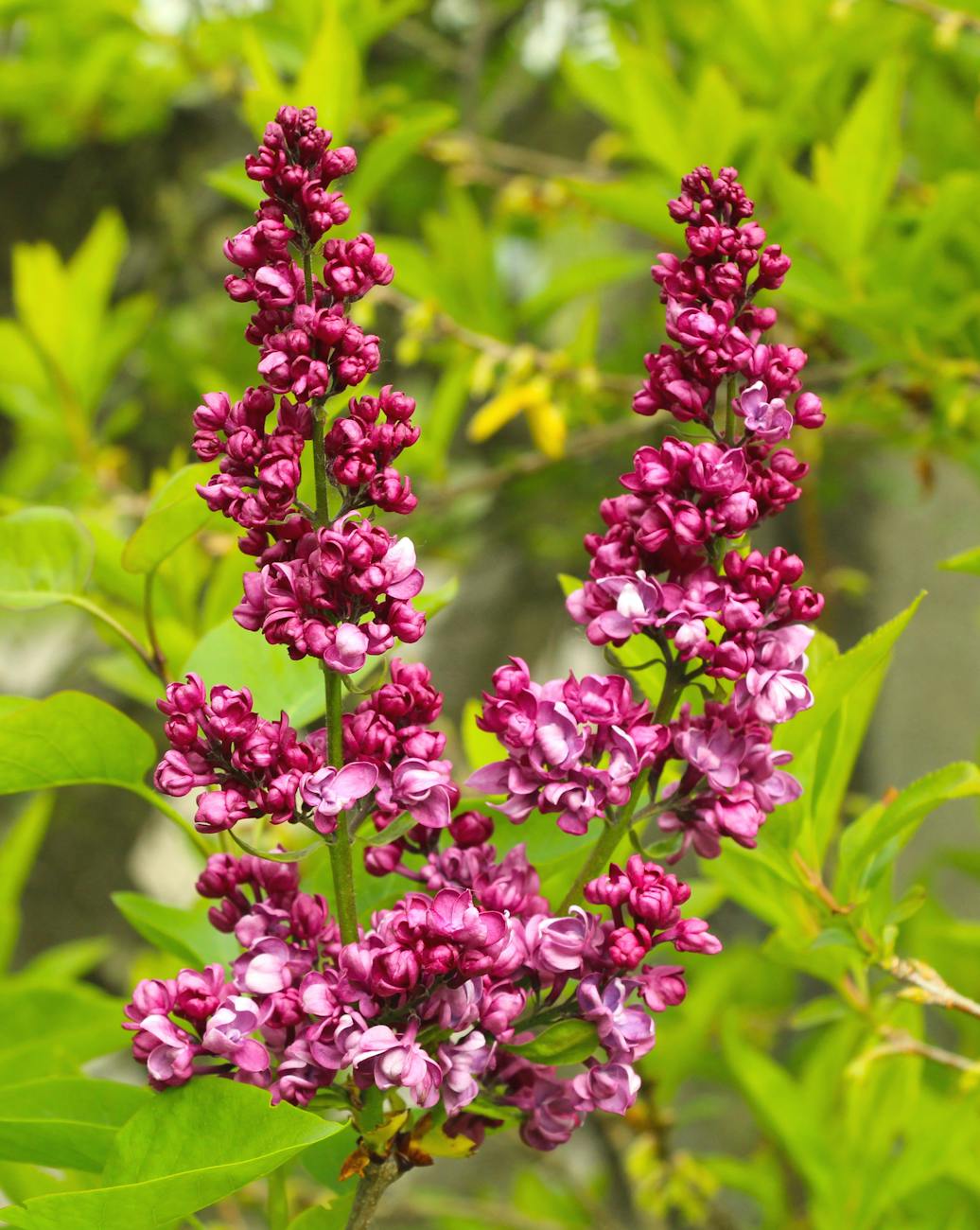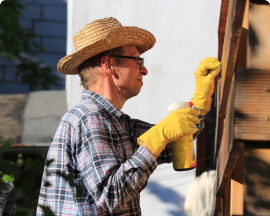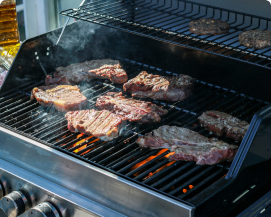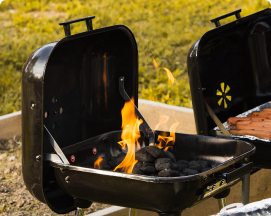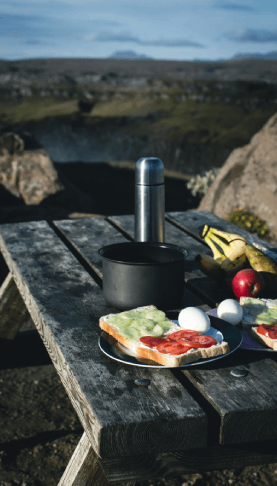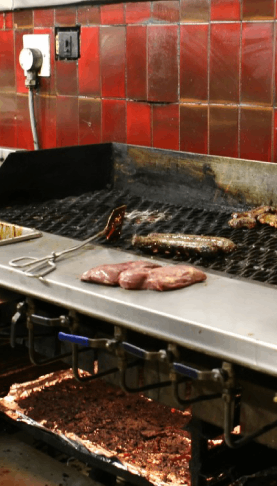Living in Colorado Springs offers an incredible quality of life, often with beautiful natural areas right at our doorsteps. This proximity to nature is a large part of the region’s charm. However, it also means we must be aware of the potential for wildfire, especially during dry conditions. Firescaping is a thoughtful approach to landscape design and maintenance that can significantly reduce the risk of wildfire damage to your home and property. It’s about making smart choices with plants, materials, and layout to create a more fire-resistant environment. We want to guide you through the principles of firescaping, helping you create a safer, more defensible Colorado Springs landscape without sacrificing beauty.
Understanding Wildfire Risk in the Colorado Springs Area
Our local climate, characterized by periods of low humidity, sunshine, and sometimes strong winds, can create conditions where wildfires can ignite and spread quickly. Many homes are located in what’s known as the wildland-urban interface, or WUI, where residential areas meet or intermingle with undeveloped forests or grasslands. In these areas, creating ‘defensible space’ around your home is a key strategy. Defensible space is the area around a structure where vegetation and other flammable materials have been modified to slow the spread of wildfire and provide a safer area for firefighters if they need to defend your home. We need to stress the importance of this concept to every homeowner in at-risk locations.
Key Principles of Firescaping Design
Firescaping isn’t about creating a barren, plant-less yard; it’s about intelligent design and plant selection. Several core principles guide this approach.
Defensible Zones: A primary concept in firescaping is the creation of zones around your home, each with specific recommendations. Zone 1 is closest to the house, Zone 2 extends further out, and Zone 3 is the outermost area. We will break these zones down in more detail.
Fuel Reduction: This means removing or reducing highly flammable vegetation and other combustible materials from your property. The less fuel there is for a fire, the slower it will spread and the less intense it will be.
Creating Fuel Breaks: Fuel breaks are areas designed to interrupt the path of a fire. These can be created using hardscaping elements like patios, walkways, and driveways, or by strategically planting low-flammability, well-irrigated vegetation.
Plant Selection: Choosing fire-resistant plants is a cornerstone of firescaping. It’s important to understand that no plant is completely fireproof, but some are much less likely to ignite or will burn less intensely than others.
Maintenance: Regular landscape maintenance is absolutely vital. This includes removing dead plant material, pruning trees and shrubs, and keeping plants properly watered. A well-maintained firescape remains effective over time. Many Colorado Springs landscaping companies are familiar with these principles.
Zone 1: The Home Ignition Zone (0-5 feet from the house)
This zone, immediately surrounding your home, is the most critical. The goal here is to create an environment where it’s very difficult for a fire to take hold or transfer from the landscape to your house.
We strongly recommend using non-combustible materials like gravel, pavers, concrete, or rock mulch in this area. Avoid using flammable wood mulches right next to your foundation. It’s best to keep plant material out of this immediate zone as much as possible, especially directly under windows or vents. If you do have plants, ensure they are low-growing, high-moisture content varieties, and keep them well-watered and maintained. Regularly clear leaves, pine needles, and other flammable debris from your roof, gutters, and the base of walls. We should get homeowners to do this as a routine task.
Zone 2: The Lean, Clean, and Green Zone (5-30 feet from the house)
In this zone, the aim is to reduce the overall fuel load and create space between plants to slow a fire’s spread. Plantings should be low-growing and well-spaced. Choose fire-resistant species and keep them healthy with appropriate irrigation.
Trees in this zone should have their lower branches pruned up, typically 6 to 10 feet from the ground (or one-third the tree’s height for smaller trees), to prevent fire from climbing into the crowns. This is often called ‘limbing up’. Break up continuous stretches of vegetation with hardscape elements like pathways or rock features. Ensure that shrubs are not planted directly under the drip line of trees, as this can create a ‘ladder fuel’ situation, allowing fire to move from ground level into the treetops.
Zone 3: The Reduced Fuel Zone (30-100+ feet from the house, or to your property line)
The focus in Zone 3 is on thinning out existing vegetation rather than extensive new planting. Reduce the density of trees and shrubs, creating more space between them. Remove highly flammable native vegetation if it’s close enough to pose a threat to your home, or thin it significantly. The goal is to interrupt the fire’s path and lessen its intensity before it reaches the more managed zones closer to your house. A good landscaper Colorado Springs can help assess and manage this larger zone.
Recommended Fire-Resistant Plants for Colorado Springs
Choosing the right plants is a significant part of firescaping. Fire-resistant plants generally have a high moisture content in their leaves, low amounts of volatile oils or resins, and tend not to accumulate large amounts of dead, dry material.
Some examples of plants often considered more fire-resistant include many deciduous trees (which lose their leaves seasonally) like Aspen, some Maples (such as Autumn Blaze), and Lilac shrubs. Certain perennials and groundcovers like Sedum (Stonecrop), Yarrow, and some varieties of ice plant can also be good choices. Remember, even these plants need to be well-maintained and properly irrigated to retain their fire-resistant qualities.
Plants to generally avoid, or use very sparingly and far from structures, include those that are resinous or have a lot of fine, dry, or dead material. Junipers, especially when planted close to a home, can be highly flammable. Some ornamental grasses can also become very flammable if not cut back regularly.
Hardscaping’s Vital Role in Fire Resistance
Hardscape elements are your best friends in firescaping. Patios, walkways, driveways, and retaining walls made from non-combustible materials like stone, brick, or concrete act as excellent fuel breaks. They can halt the spread of a surface fire and provide defensible space. Using rock, gravel, or decomposed granite as mulch instead of wood chips, especially in Zone 1, can also significantly reduce the risk of ignition.
Maintenance: The Ongoing Key to Firescaping Success
A firescape is not a one-time installation; it requires ongoing commitment to maintenance. Regularly remove dead leaves, pine needles, fallen branches, and other flammable debris from all zones. Keep plants properly watered according to their needs, as healthy, hydrated plants are less flammable. Prune trees and shrubs as needed to maintain spacing and remove dead or dying material. Each year, it’s a good idea to review your defensible space to ensure it still meets firescaping guidelines.
Working with Professionals for a Fire-Resistant Landscape
Designing and implementing a truly effective firescape can be a complex undertaking. Professional Colorado Springs landscaping companies with experience in firescaping can provide invaluable assistance. They can help you develop a comprehensive plan tailored to your property’s specific risks and features. They are knowledgeable about appropriate fire-resistant plant selection for our area and can correctly install both plants and hardscape features. They can also assist with creating and maintaining your defensible space, helping to protect your home and family against the threat of wildfire.
Finishing Thoughts
While no landscape can be made entirely fireproof, implementing firescaping principles is a powerful and responsible step towards reducing the wildfire risk to your Colorado Springs landscape and home. By making informed choices about plant selection, placement, and materials, and by committing to regular maintenance, you can create a more beautiful, enjoyable, and significantly safer outdoor environment. We hope these guidelines provide a solid foundation for planning your own fire-resistant landscape. Taking these proactive measures can bring peace of mind and help protect what is most valuable to you. For further guidance, consider consulting local fire departments or exploring other resources on our blog.


